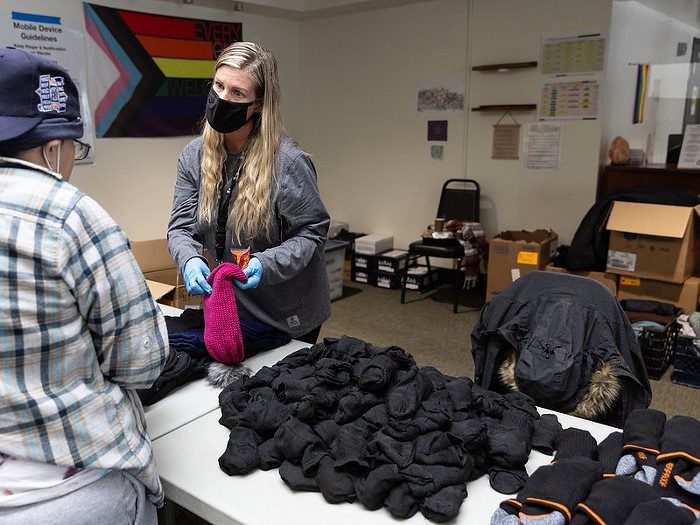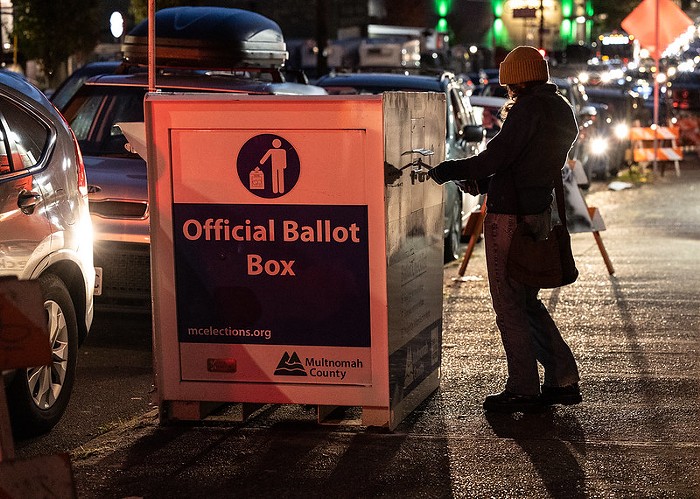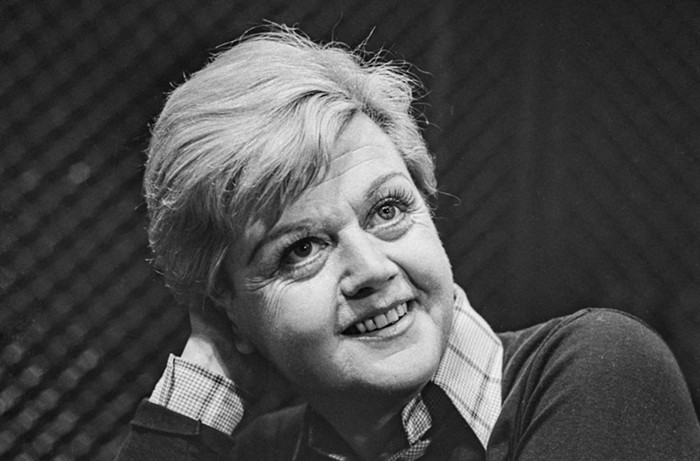
Reproductive rights advocates in Oregon had anticipated the day would come when the conservative politics of neighboring Idaho would criminalize abortion—forcing Idahoans to cross state lines to access basic healthcare. But that didn’t make the news of Idaho lawmakers passing a bill banning most abortions this week any easier to digest.
“It’s one of those moments when you’re so heartbroken that you called it correctly,” said Christel Allen, director of Pro-Choice Oregon, a reproductive healthcare advocacy organization. “And knowing you could play a role other than bystander to this trauma. Knowing that what started in Texas is spreading.”
On Monday, Idaho lawmakers sent a bill to the desk of Governor Brad Little that prohibits abortion after six weeks of pregnancy—a period of time before many people even know they’re pregnant. It’s the first state to adopt a copycat bill to the Texas law passed in September, which caps abortions at six weeks and allows any citizen to sue anyone who performs an abortion or “aids and abets” the procedure (a role that can include anyone from an Uber driver to a therapist). The Idaho bill, which Little is expected to sign into law, doesn’t go quite as far as its Texas predecessor—it only allows family members of the aborted fetus to sue the abortion provider. And, unlike the Texas law, the Idaho legislation does allow exceptions for victims of rape and incest, but only if the patient can provide a police report.
Since the Texas law was enacted, the state has seen a 60 percent drop in abortions—while clinics in neighboring states have witnessed skyrocketing demand. Even Oregon, separated from Texas by three states, has felt that increase: The regional abortion fund provider Northwest Abortion Access Fund (NWAAF) reports receiving four times as many calls in the past six months from Texans seeking an abortion in Oregon than the same period the previous year.
With Idaho just next door, Oregon abortion providers and advocates are expecting a much larger surge in need from Idaho residents seeking an abortion. It’s a need that Oregon abortion advocates have been preparing to meet for years.
“We’re already well-positioned to deal with this kind of barrier,” said Rebecca Koon, a NWAAF board member. “It’s been on our minds for a while.”
NWAAF specializes in helping low-income people access abortions in Oregon, Washington, Idaho, and Alaska. Like most regional abortion funds, NWAAF helps people seeking an abortion to cover all costs associated with the experience. That can include travel expenses for those living far away from an abortion clinic, the cost of a hotel room and meals, childcare expenses, and the cost of the procedure itself—which can range from $600 to $2,000 depending on how far along a pregnancy is.
Koon said that, of the 1,000 average calls NWAAF receives to its hotline each year, the majority have historically been from Idaho. This could be because, unlike Washington, Oregon, and Alaska, Idaho’s medicaid program doesn’t cover abortion, making it an out-of-pocket expense for low-income residents. Koon said that this inequity is why it’s important NWAAF is able to rely on other states’ abortion care and protections.
“The fact that two of our states [Oregon and Washington] have enshrined protections for abortion gives us the opportunity to redistribute wealth in our region,” said Koon.
Idaho’s abortion ban will mean the closest abortion clinic for most Idahoans is in Bend—a five-and-a-half hour drive from Boise, Idaho’s capital and most populous city. And the ban doesn’t only push abortion out of reach for Idahoans. For many living in Eastern Oregon, Boise is currently the closest city to obtain an abortion. With the ban in place, those Oregonians will also be forced to travel much further to seek the procedure.
Koon said NWAAF has discussed how the influx of abortion-seekers from Idaho and Eastern Oregon could burden the abortion clinics closest to them. In in months after Texas’ abortion ban became law, clinics in the states surrounding Texas reported a surge in wait times to schedule an abortion appointment. An abortion procedure is usually more costly the further along a person is in their pregnancy.
“We need to make sure providers aren’t overwhelmed by appointments,” said Koon. “But time is really of the essence for us.”
That could mean paying extra to fly a patient to Seattle or Portland, where there are more abortion clinics per capita.
For NWAAF, whose average donation is $350, the main question is funding.
“We fully fund people when we can, but sometimes we don’t have enough,” said Koon. “Which means we have to ask people heartbreaking questions like, ‘Can you sell something? Can you borrow money from someone?’ When demand increases, we struggle to pay for it. That’s our biggest concern.”
Oregon state legislators aimed to address that concern on Tuesday, with the creation of the Oregon Reproductive Health Equity Fund, a program to address “immediate and urgent patient needs for abortion funds and practical support” backed by $15 million in state dollars. The announcement was made as a direct response to the Idaho bill.
“People from states with more restrictive laws already travel to Oregon for abortion care, and we face the very real likelihood that other states will ban abortion and shutter clinics,” said Portland Representative Tawna Sanchez in a press statement. “We are rising to this alarming moment to invest in abortion access as a central foundation of Oregon’s healthcare infrastructure.”
The $15 million will be distributed to both abortion providers and community advocates by Seeding Justice, an Oregon nonprofit with a strong track record of effectively managing grant funds for social justice programs—like the Oregon Worker Relief Fund.
Allen with Pro-Choice Oregon said that this investment not only offers financial wiggle room for cash-strapped abortion support programs, it sends a message to other state legislatures.
“In the most public way, our lawmakers are affirming that abortion is healthcare and that they have listened to us… that they trust us,” said Allen. “We need to do the best job we can possibly do to make the biggest impact with these funds. And we want to see other states follow this lead.”
Many abortion advocates in Oregon see Texas and Idaho’s anti-abortion bills as just a warning shot preceding the barrage of state-level abortion restrictions that will be allowed if the US Supreme Court choses to overturn the federal prohibition on state abortion bans upheld in 1973’s Roe v. Wade this summer.
“We know that Idaho is just the beginning,” said An Do, director of Planned Parenthood Advocates of Oregon. “We anticipate that in the summer, the US Supreme Court will gut the right to abortion. We see this as a precursor to a much larger seismic shift in access to abortion care.”
With Oregon poised to become a national reproductive healthcare provider, Do wants to see long term investments in the state’s reproductive health programs. Do said she’s witnessed several county health departments across Oregon cut their family planning programs due to the financial strains posed by COVID-19. A study by the Guttmacher Institute, a reproductive healthcare research nonprofit, found that 19 percent of polled Americans had more trouble getting contraceptive or other sexual and reproductive care in summer 2021 than during the previous year.
Do also noted that the reproductive healthcare industry has seen the same kind of workforce shortages as other US industries since COVID-19 began.
“We need sexual reproductive health care to expand, and instead that care is shrinking,” said Do.
Do wants to see a future where patients across the country are “seamlessly” connected to trusted abortion providers in Oregon, and assisted by a local mutual aid network of support—not unlike the care NWAAF offers. She believes that, through this work, Oregon can be a fertile environment to plant the “seeds of radical change” toward a future with more equitable access to reproductive healthcare. That includes tearing down the federal limitations to abortion that still exist under Roe v. Wade, like the ban on using federal Medicaid dollars to cover abortion costs.
“We’re at the beginning of an intergenerational fight,” said Do. “This is not a one or two or three year fight. It’ll take quite the pendulum swing to get there. For me, Roe was never enough. We want to build a world that is better than these breadcrumbs we’ve been asked to settle for since 1973.”



















